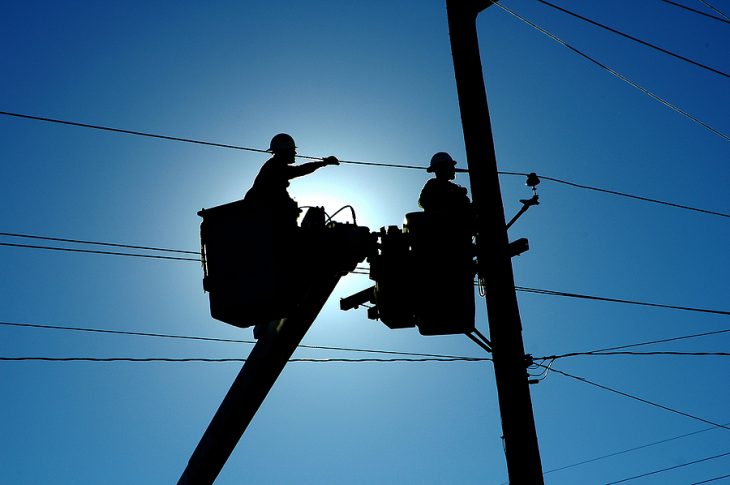
Lobbying, new energy board, sees province take action
By Ahmad Hathout
TORONTO – The Ontario government has made good on a pledge to tackle broadband roadblocks in the province by proposing in new legislation to reduce hydro pole attachment costs, a move that is receiving praise across the board and that has been many months in the making.
The legislation, called Building Broadband Faster Act, proposes timely access by telecommunications companies to infrastructure owned by utilities and municipalities, including underground facilities, and requires utilities to better prepare their poles for new wire attachments, which require weighting assessments – the cost of which is often passed on to telecom companies. The legislation would also give Ontario the authority to reduce or fix attachment fees, regulate how utilities respond to attachment requests, and for those utilities to consider telecom attachments during pole replacement or refurbishment.
The proposed bill, which must now face debate in the legislature, comes on the heels of newly-installed members of the Ontario Energy Board, whose mandate letter includes pole attachment rates as a priority item.
When asked about how the OEB got involved in the proposed legislation, Ontario government spokeswoman Sofia Sousa-Dias said the board “reviewed current pole attachment rates and provided policy advice.
“The OEB was a key stakeholder in drafting this legislation because it directly impacts their authorities,” she said, adding the OEB will continue to provide guidance as regulations are developed.
It also got a nudge from the large telecoms, some of which have lobbied the provincial government for months about the problem.
“We made a commitment to address barriers to deployment and we have heard consistently that these barriers include challenges with attaching to hydro poles,” Sousa-Dias said when asked how the large telecoms got involved. “After listening to the issues on the ground, we are now delivering on that commitment.”
Bell spokesman Nathan Gibson said in a statement, “As we accelerate the rollout of Bell’s broadband fibre, rural Wireless Home Internet and 5G networks over the next two years, these steps by the government will help us reach more locations in Ontario faster, bringing next-generation connections to homes and businesses in communities throughout the province. We welcome the Government of Ontario’s approach to moving broadband forward.”
Rogers said in an Ontario government backgrounder, “More than ever, digital infrastructure plays a critical role in our lives and Rogers applauds the Government of Ontario’s efforts to support expansion of broadband services in both urban and rural and remote areas to benefit consumers and businesses in Ontario. This is an important step and we look forward to continuing to partner with them to reach additional communities across the province.”
Cogeco, Hydro One, the Electricity Distributors Association, and the Association of Municipalities of Ontario also responded favourably to the proposal.
“CNOC members have observed that similar problems exist with access to incumbents’ ducts, rights of way, and inside wire.” – Matt Stein, CNOC
The quest for rapid deployment of broadband is central to the mission of provincial governments and Parliament Hill. In May, the Quebec government announced a “co-ordination table” that includes the largest telephone companies, Bell and Telus, and Hydro Quebec to facilitate access to structures.
The federal government’s Universal Broadband Fund will also look favourably upon applicants who offer up their existing infrastructure to third-party access, a new move that previously was relegated to a requirement for builds using federal money.
While Matt Stein, president of Distributel and head of the Competitive Network Operators Consortium, which represents smaller providers, told Cartt.ca that timely access to poles is “critical,” he said it’s effectively just one aspect of the access equation.
He pointed instead to the bigger telecoms’ “anti-competitive conduct” on their own structures, including “exclusivity, blocking tactics, unreasonable rates and arbitrary fees, uncertain or excessively long timelines” that persist. “CNOC members have observed that similar problems exist with access to incumbents’ ducts, rights of way, and inside wire,” he added.
“It’s great to see other levels of government working on improving support structure access, but the biggest issue from CNOC’s perspective and the perspective of delivering more choice, affordability and innovation to Canadians, is access to telecommunications facilities, including fibre, at reasonable wholesale rates.”
The Ontario government said it has made broadband a priority during its tenure.
In 2019, the government introduced its Up to Speed broadband plan to build better broadband infrastructure; it has committed $1 billion to broadband expansion in the province, including investing in the Southwestern Integrated Fibre Technology (SWIFT) and Eastern Ontario Regional Network (EORN) programs; and it has recently received applications for its first round of Improving Connectivity for Ontario (ICON) fund.



